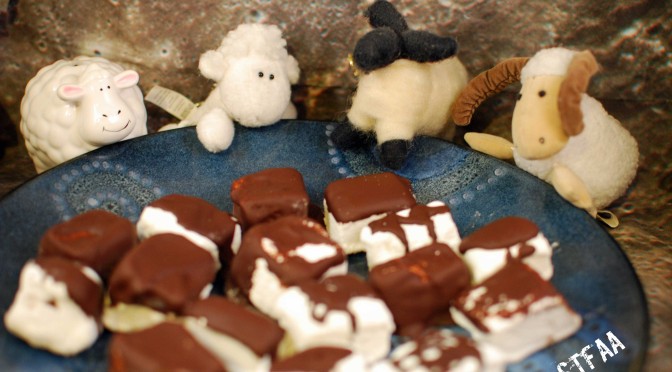
Here’s your thought experiment for this bright Monday: you live in New England. The snow piles are so high that you, in your sensible, fuel-efficient sedan, can’t see to turn corners. Another blizzard is predicted — the third in a few weeks — to last two days. But you live in New England, and you ignore it. Without really planning it, you get snowed in for two days. You could, were you industrious, brush the car off, shovel it out, brave the roads and hit the grocery store. Or you could scavenge in your own well-but-bizarrely-stocked kitchen and not bother to get dressed. Surely there’s enough food in there for two days.
What do you do?
You can start with soup. What I love about stock is that it’s a way to not waste bits and pieces — you get stock! This also means, though, that there is no real recipe for stock. I mean, you can write one. We have before. But this one is more of a concept than a recipe. I read something somewhere, likely on Facebook, about making stock in your crock pot. I think I may have linked it on a Friday. I mean, brilliant, right? So if you have a snow day, are not sure what to eat once you’ve demolished the leftovers in the fridge, and own a crock pot, this recipe is for you. Even if it’s not snowing. And even though this isn’t really a recipe.

Basic technique: Fill crock pot with stock ingredients. Fill with water. Cook for about a day.
But here’s what I do: I collect things in the freezer. When I roast a chicken or buy a rotisserie one, I keep any skin I don’t eat and all the bones — throw them in a bag in the freezer. Add other things you aren’t using — some leftover vegetables you don’t finish, mushroom stems, the quarter of an onion you don’t need for that recipe, the herbs you bought and don’t need all of. Don’t add celery — it just turns to mush in the freezer– and I’m not a fan of brassicas in stock at all (broccoli, cauliflower, cabbage) because they are very strong. Everything else? Fair game.
This stock I took photos of started with a chicken I cooked, leaving all the skin and bones and one whole thigh (I got sick of chicken that week). I also added a bag of “leftovers” from the freezer — mushroom stems, probably three quarters of an onion, and some peas. I did thaw these for a bit, but I’ll tell you my secret cheat for that in a minute.
To this cache from the freezer, I added everything that was still good in the fridge — a few handsful of parsley, a small bunch of thyme, a few carrots, some sad celery with the brown bits cut off, and a tablespoon or so of salt. Sometimes, I add peppercorns. Sometimes, I’ll roast some of the veg first; this adds great flavor, but it’s not necessary for good stock. If you have no fresh herbs, add some dried. I usually add a bay leaf, but I was out this time around. Thyme, basil, oregano, dill — all are good in stock. Add what sounds good. You can also add a bit of tomato paste, but this time, I had just finished a jar of pasta sauce for lunch, so I rinsed it out and added that water to the stock, too.
Pack all this in your crock. Then fill the crock with water. Put on the lid and cook. It really is that easy. Cook 4-6 hours on high (recommended if you started with anything frozen), or 8-12 on low. I’ve never overcooked stock, so I think this is a pretty forgiving recipe.
IF you have started with some frozen or partially frozen parts, here’s how to cheat — generally, crock pots don’t do well with frozen foods. They just don’t get hot enough. I thaw things for a few hours or overnight in the fridge first, but then I add a few cups of boiling water. Not starting from cold seems to help. You can also run the pot on high for the first hour and then turn it down.
When your stock is done, you want to strain out all the “stuff” you just extracted flavor from — I use a giant kitchen bowl with a colander in it. Dump the entire pot in, and then lift out the colander full of bones and vegetables.
If you plan to use plastic to store your stock, let it cool to room temp first. If you’re using jars, it works fine to pour it in hot. Stock should keep about 5 days in the fridge, and a few months in the freezer. Or, hey, get fancy and make some risotto right away with the hot stock.
Let us know if there are any particular ingredients you love in stock!



























